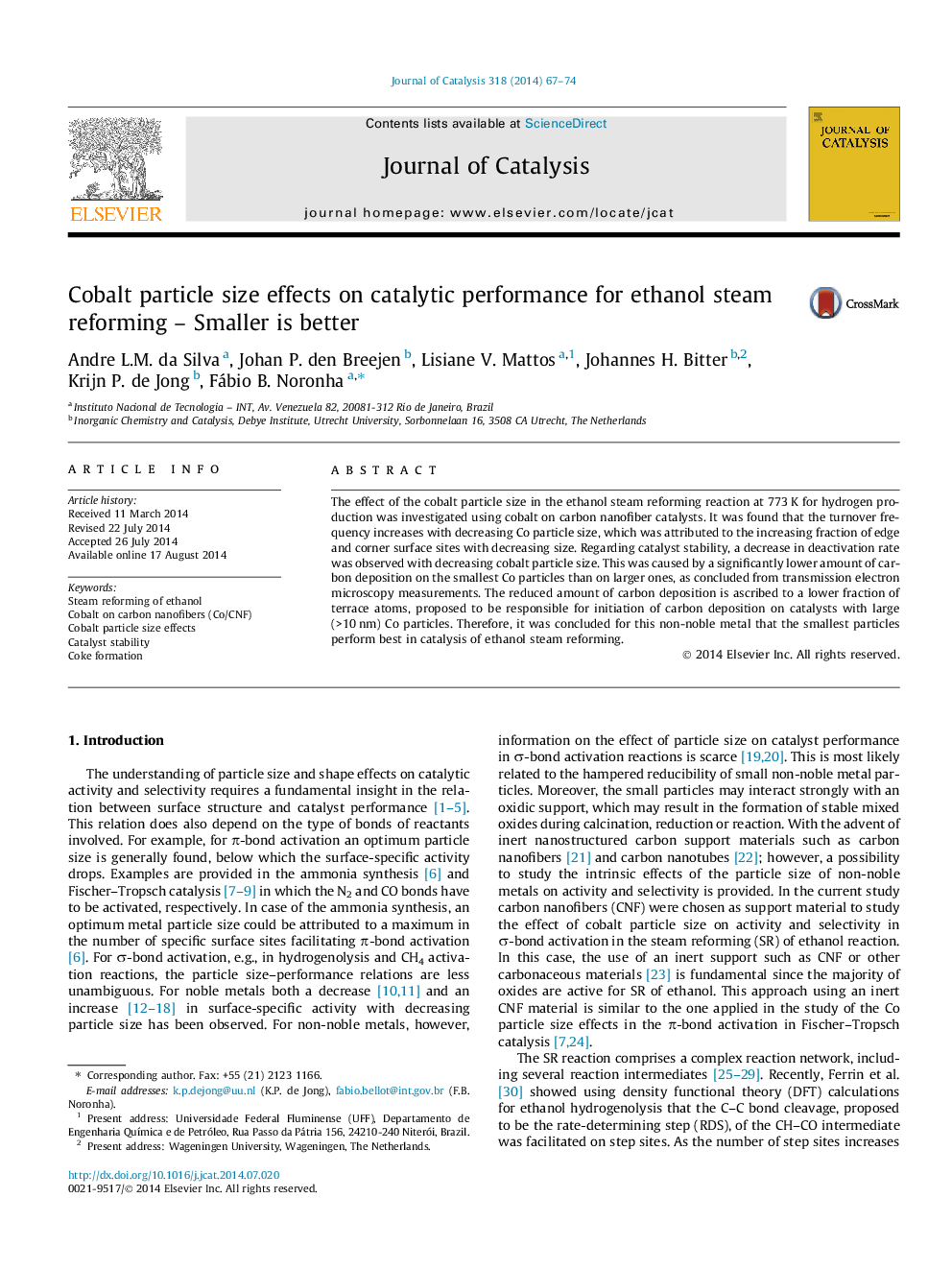| Article ID | Journal | Published Year | Pages | File Type |
|---|---|---|---|---|
| 61062 | Journal of Catalysis | 2014 | 8 Pages |
•Turnover frequency increases with decreasing Co particle size.•Decreasing Co particle size led to a higher fraction of corner surface sites.•Decreasing Co particle size reduced the deactivation rate.•A lower amount of carbon deposition occurs on the smallest (<3 nm) Co particles.•The reduced amount of carbon deposition is due to a lower fraction of terrace atoms.
The effect of the cobalt particle size in the ethanol steam reforming reaction at 773 K for hydrogen production was investigated using cobalt on carbon nanofiber catalysts. It was found that the turnover frequency increases with decreasing Co particle size, which was attributed to the increasing fraction of edge and corner surface sites with decreasing size. Regarding catalyst stability, a decrease in deactivation rate was observed with decreasing cobalt particle size. This was caused by a significantly lower amount of carbon deposition on the smallest Co particles than on larger ones, as concluded from transmission electron microscopy measurements. The reduced amount of carbon deposition is ascribed to a lower fraction of terrace atoms, proposed to be responsible for initiation of carbon deposition on catalysts with large (>10 nm) Co particles. Therefore, it was concluded for this non-noble metal that the smallest particles perform best in catalysis of ethanol steam reforming.
Graphical abstractFigure optionsDownload full-size imageDownload high-quality image (39 K)Download as PowerPoint slide
